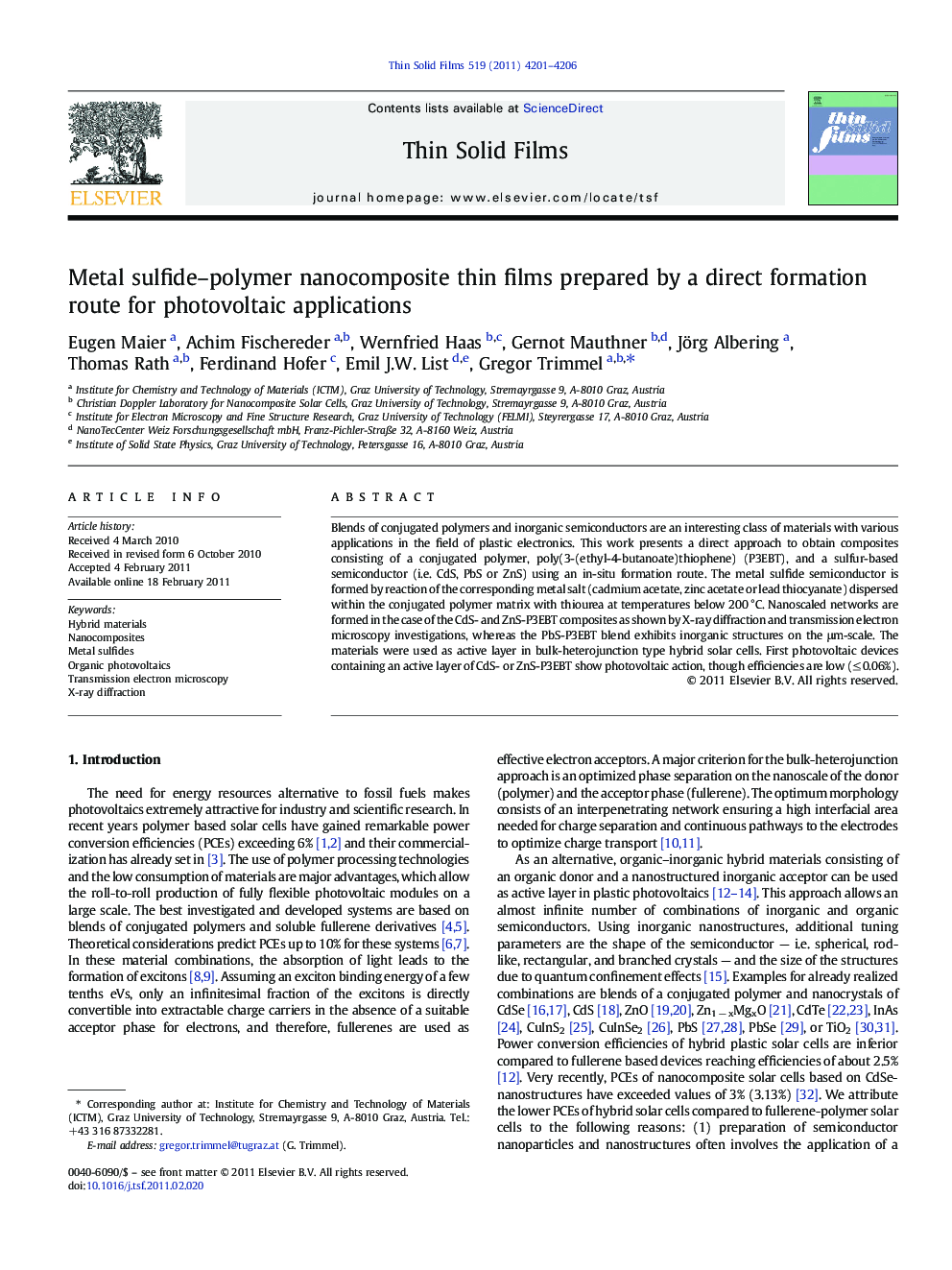| Article ID | Journal | Published Year | Pages | File Type |
|---|---|---|---|---|
| 1668621 | Thin Solid Films | 2011 | 6 Pages |
Blends of conjugated polymers and inorganic semiconductors are an interesting class of materials with various applications in the field of plastic electronics. This work presents a direct approach to obtain composites consisting of a conjugated polymer, poly(3-(ethyl-4-butanoate)thiophene) (P3EBT), and a sulfur-based semiconductor (i.e. CdS, PbS or ZnS) using an in-situ formation route. The metal sulfide semiconductor is formed by reaction of the corresponding metal salt (cadmium acetate, zinc acetate or lead thiocyanate) dispersed within the conjugated polymer matrix with thiourea at temperatures below 200 °C. Nanoscaled networks are formed in the case of the CdS- and ZnS-P3EBT composites as shown by X-ray diffraction and transmission electron microscopy investigations, whereas the PbS-P3EBT blend exhibits inorganic structures on the μm-scale. The materials were used as active layer in bulk-heterojunction type hybrid solar cells. First photovoltaic devices containing an active layer of CdS- or ZnS-P3EBT show photovoltaic action, though efficiencies are low (≤ 0.06%).
